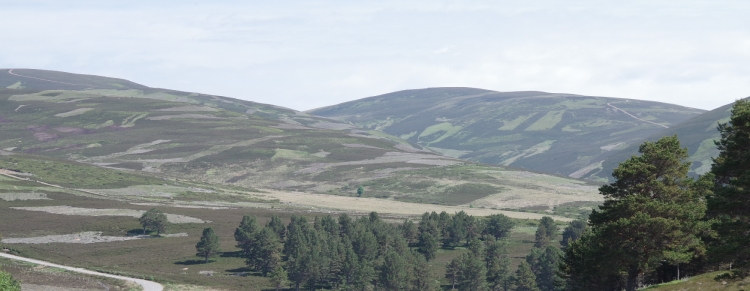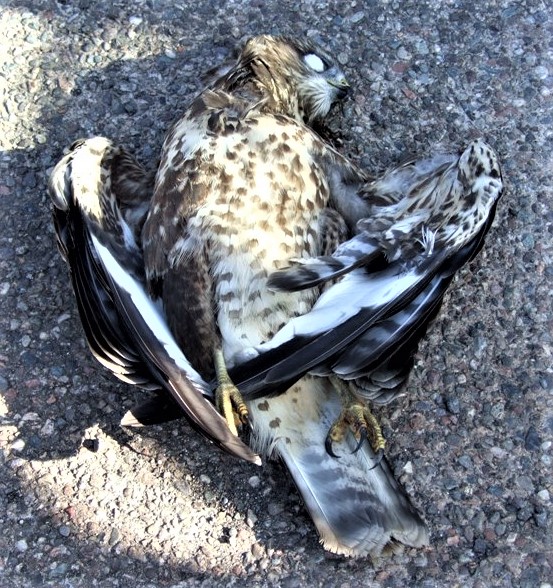Join our community & help make Camera Satellite Tags a reality

SHOT TO DEATH
Red Kite – Shot in Buckinghamshire
Why?
……….because they can
There are numerous issues surrounding Raptor (Bird of Prey) persecution and nearly all instances involve intentional illegal acts, and it is happening all around the UK. Whether it’s a rogue pigeon fancier shooting or poisoning Peregrine Falcons that take out that valuable racing pigeon or ‘bad apple’ gamekeepers that feel that it is justified trying to eradicate Golden Eagles, Hen Harriers, Goshawks, Red Kites, Common Buzzards and more, on Driven Grouse Moors (DGM), whatever tactic they use to kill, they are all AGAINST THE LAW!

This RSPB Crime map (see here) details the persecution blackspots around the UK. You may be surprised to learn that some of the worst Raptor ‘killing fields’ are within our National Parks. North Yorkshire heads the list of top 20 blackspot Counties for persecution with over 10% of incidents, with Highland in Scotland the next worse. (recorded between 2007-18).
Pie Charts showing Persecution by Incident Type on the left and Occupation/Interests of 181 individuals convicted of bird of prey persecution related offences 1990–2019 on the right.

Biodiversity Carnage & Ecological Damage

Image Peter Howe
Rotational burning, restoration burning, muirburn, catchment restoration plan – whatever you want to call it, the practice of burning blanket bog is ecologically damaging to our environment. Under EU law deep peat burning breaches the Habitats Directive. We await to see how our own legislation will be affected now we are officially out of the EU.
The peatlands are a natural carbon sink, capturing and storing billions of tonnes of carbon. Heather is burned on upland peat bogs, primarily on DGM’s. It is also drained to create favourable habitat for Red Grouse to breed, the young heather shoots that appear after burning are a source of food for the Red Grouse.
But this damaging practice releases CO2, dries out the peat, which aids water run-off when it rains and assists the speeding up of flooding further down the valley. It also contributes to turn the water downstream brown, this means we, the general public, are likely to be paying higher water costs as the water companies clean it to make it fit for us to drink. Aquatic life in streams suffers from the toxins that enter the water from ‘run-off’. For more information into the effects of moorland burning and its consequences to our environment please read this study – Effects of Moorland Burning on the Ecohydrology of River basins (EMBER)
The above takes place on Driven Grouse Moors to artificially boost the density of grouse purely for estates to sell shooting days to clients, the Grouse are driven towards a line of butts (enclosures to conceal the shooters) where they are blasted out of the sky, all in the name of a ‘fun’ day out.
I would point out that another form of Grouse shooting ‘walked up’, is widely regarded as more sustainable. Smaller numbers of shooters flush out the Grouse with dogs, less grouse are shot compared to the more intensive land management practices of Driven Grouse Moors where large numbers of Grouse are shot.
Some moorland estates are doing good work along with their dedicated land managers, to protect BoP on their estates. Birds though, do not stay within borders, and they are in danger once they stray into nearby unwelcome estates!
PROJECT CamTag®
needs YOUR help
Please Donate Now
For payment details click here

image RSPB
Today, BoP are still persecuted all around the UK. Routinely shot, poisoned & trapped, none more so than on and around Driven Grouse Moors (DGM), despite being fully protected since 1954. Hen Harriers are the most persecuted BoP in the UK in correlation to its density of population, primarily because part of their diet during the breeding season, other than small mammals, consists of Red Grouse, predominantly the chicks.
The huge land masses that are Driven Grouse Moors can be tens of thousands of hectares. Over such an expanse it is extremely difficult to find a ‘downed’ bird, let alone catching the culprit that killed it. Gamekeepers make up 68% of those convicted of Raptor persecution crimes between 1990 -2015 (Source: RSPB Birdcrime 2015)
Since 2018, 43 satellite tagged Hen Harriers have been killed. This is just the tip of the iceberg, it can only be guessed at what the true number is once you add in the birds that are not tagged. You can find further information on this from Raptor Persecution UK blog (see here)
If this outrages you as it does me then please help by supporting my PROJECT CamTag®

Image Peter Howe
The Red Grouse is such a wonderful bird, a truly wild bird, at home on heather moorland in the uplands of the UK. Yet this charismatic, charming, rather bulky little bird about the size of a chicken, is directly at the centre of why there is so much wildlife persecution on Driven Grouse Moors (DGM).
It’s not the Red Grouse’s fault, far from it, in fact it doesn’t have any idea that it is at the heart of so much discussion. If only it did, I’m sure it would be calling for a ban on Driven Grouse Shooting too!
The natural population density level for Red Grouse is difficult to quantify. Much is written about Red Grouse, but actual numbers surveys are thin on the ground. Sheep overgrazing has badly degraded their habitat and natural densities outside grouse moors have declined. In the tetrad atlas Breeding Birds of Cumbria 1997-2001 the count data reflects a more ‘natural’ level of 4-5 birds/km². (Stott et al Eds. 2002) For DGM’s to make a ‘good day out’ for the Guns, landowners need to artificially increase the population to around 200+ birds/km², so that the surplus can be shot for ‘fun’. During 12th August and 10th December (nationally now referred to by many conservationists as the ‘Inglorious 12th’) approx. 500,000 birds are killed. Wild Ennerdale (wildennerdale.co.uk) produced this survey in 2007
As Red Grouse are not able to be farmed like Partridge & Pheasant, landowners and gamekeepers employ some rather unpleasant techniques to eradicate virtually all wildlife that could possibly be a threat to this manipulated population. However extraordinary it may sound Foxes, Stoats, Weasels, Crows and Magpies are allowed to be legally killed under licence, and they are by the 10’s of 1000’s, but pressures from some gamekeepers employers means that also thrown into this mix is the abhorrent act of illegally killing Birds of Prey. From the UK’s smallest the Merlin, to the largest the White Tailed Eagle, none are safe if they venture on or near a DGM.
Some Driven Grouse Moor estates do have areas where management procedures have a positive impact on breeding waders such as Curlew, Golden Plover & Lapwing, while negative impacts can be recorded for other species such as meadow pipit, skylark & whinchat this summary from the Journal of Applied Ecology sheds light on the data. DGM estates would have you believe though, that the reason why some of these estates are breeding epicentres for some species is because of the way they manage the land for the better. In reality the claims are distorted as you could have successes in many other areas if you eradicated all the apex predators. The techniques used for killing and suppressing what they like to call ‘vermin’ comes at a huge cost to our environment. All in all, a DGM is an intensively managed wilderness devoid of the most basic biodiversity.
Persecution of our Birds of Prey (BoP) is nothing new, Henry V111 passed a law whereas everyone in the country could kill as many animals as they could and get paid for doing so, classed as vermin, none were safe. Although that law was abolished in the mid 1700’s, three centuries on some of that same mentality still exists. See this Guardian article (here)
Although not condoning it, 500 years ago, there would have been rich habitat, wildlife & biodiversity. Sadly today, with depleted habitats, pollution, pesticides, exploitation and intensive land management practices our biodiversity is in a desperate state. In fact the UK was ranked 189th out of 218 countries in the world Biodiversity Intactness Index (The State of Nature Report 2016).

Image courtesy of RSPB
PROJECT CamTag®
needs YOUR help
Please Donate Now
For payment details click here

